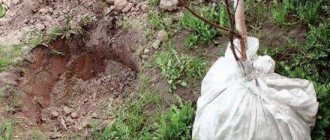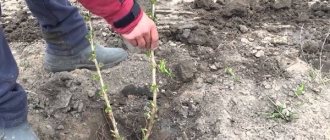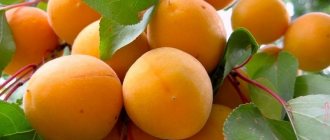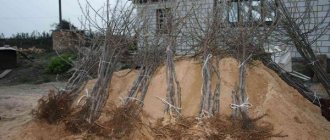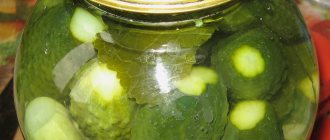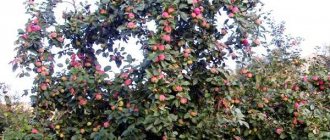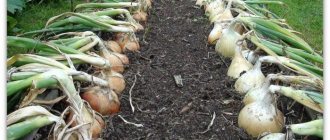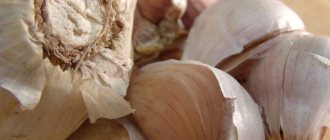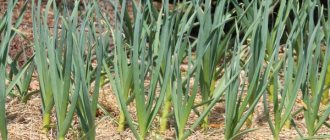Why do you need to replant a pear tree?
Sometimes it happens that a pear tree needs to be replanted. It happens, for example, if the gardener chose the wrong place initially:
- ruined the root neck too much;
- groundwater comes too close;
- the neck of the root was too deep, which is why the tree began to hurt.
If planted incorrectly, the appearance of the crop and the rate of its development are primarily affected. If mistakes have already been made, you can try to replant the pear.
Requirements for a new location
In order for a transplanted tree to develop well and produce high yields, it is necessary to satisfy its requirements for various environmental conditions: heat, light, soil fertility, moisture. You can find a plot in one area unsuitable for planting a garden and another. On which pears will not only grow, but also bear fruit well. Therefore, it is necessary to pay attention to the terrain and soil features. In the south, plantings should be placed in low plains and floodplains. In the central regions and when planted in the spring in the Moscow region, pears will grow better on gentle slopes. In mountainous areas, southern slopes with a steepness of up to 20 degrees are allocated for gardens. On personal plots there is no particular choice of required areas. But how the newly transplanted tree will grow there can be determined by the type of vegetation growing there. If oak, maple, and hawthorn grow and develop well in the area, then the pear tree will grow and produce good harvests. When an alder or aspen feels at ease next to a fruit tree, then one cannot expect good harvests from pome trees. This material will tell you about planting pears in spring in Siberia.
The soil
When choosing a place to plant a pear, you should pay attention to soil conditions:
- It is better to allocate an area with fertile and deep soil;
- Soil water must lie deeper than two meters;
- It is better to choose areas without supports. This applies to Forest regions. Fruit trees do not grow long in such an area and dry out young;
- To the north of the central regions, the best soil for planting is light loam and sandy loam. In the central regions there are chernozems, dark chestnut and chestnut soils.
Pears can grow and develop anywhere. The only exceptions are saline, gleyed and waterlogged soils.
Fertilizers
To maintain soil fertility, mineral and organic fertilizers are used. Organic ones include:
- Manure. It is better to use it in the fall. But if you fertilize a site in the spring, then only apply rotted, or even better, humus, when the manure has turned into a homogeneous earthy mass;
- Feces. Used in the form of composts;
- Bird droppings;
- Peat. High-moor and low-lying peat are used for composts;
- Green fertilizers. In July-August, green manure is sown, and in the fall the green mass is incorporated into the soil;
- Ash. Mainly used on acidic soils.
There is a wide variety of mineral fertilizers, but potassium salt, superphosphate, and ammonium nitrate are widely used in gardening. Read about the features of the decorative Aflaut onion.
Before planting a tree, a forty-centimeter layer of earth and 30 kg of humus are poured into the hole, after mixing them.
When can you replant a pear tree?
Trees of different ages are replanted.
There is an acceptable norm when it is still possible to replant a pear tree. This:
- or when the seedling has only recently been planted and has not yet had time to grow stronger;
- or seedlings that are 3 years old. This period is considered a turning point in the life of the pear tree, so it will still be able to adapt to new conditions.
There are also precedents when pears aged from 5 to 10 years were transplanted to a new place. However, the older the tree, the less chance of successful establishment.
Preparing the planting hole
The planting hole for pears is prepared in the fall; its dimensions should correspond to the size of the root system of the seedlings, but it is useful to remember that deepening the root collar threatens the death of the planted plant.
Ideal dimensions of the planting hole for the pear:
- Depth – from 45 to 55 cm.
- Width – up to 100 cm.
In the fall, they find a suitable place in the garden, making sure that there are apple trees next to the pear tree. The distance between trees should be maintained at least 5 meters.
In the fall, the top layer of soil, removed when digging a hole, is added to the planting hole, pre-mixed with humus, peat and ash. It is useful to immediately fill the soil with superphosphate.
Important! You cannot use fresh and rotted manure when planting pears; an excess of nitrogen harms this crop.
What you need to know when transplanting
The very first and most important thing to remember is that this time everything needs to be done well, that is, the tree will definitely not survive the next transplant.
Therefore, a number of factors will need to be taken into account.
| Right place | Pear does not like close groundwater, as well as hills or potholes. She needs enough sunlight, as well as distance from other buildings or plants. |
| Preparing the planting hole | When replanting a tree, just like during the main planting, it is necessary to prepare a planting hole in advance, add drainage to it and mix additional fertilizers with the nutrient soil. |
| Compliance with sizes | It will be necessary to take into account that if a larger pear is replanted, part of the earthen clod will move to the new place, so the size of the hole should be adjusted correctly. |
| Select transfer date | It is believed that the best time to transplant a pear is spring or early autumn. It is necessary to replant the tree either at the very beginning of spring, before the sap begins to flow, or to outline the replanting procedure for the fall. |
But you need to take into account that after the tree gets to a new place, it will begin to actively develop. You need to calculate the time so that there are at least 30 days left before frost, so that the pear has time to prepare for it.
Features of spring pear planting in different regions
It is necessary to plant a pear taking into account the climate of the region. If spring is late, it is worth delaying the procedure - the temperature should be no lower than 5℃ above zero. Otherwise, the young seedlings will die from the cold. But you shouldn’t be late either - all work must be completed before the plants wake up.
Planting pears in spring in the Moscow region
The Moscow region has a temperate continental climate, characterized by warm summers and cold winters with snow. In spring, the soil is moistened with melt water, and in autumn it often rains, so there is no need to water the pear often - the crop will not die from drought.
Frost-resistant varieties that are not afraid of temperature fluctuations and parasite diseases are suitable for this region. Even if such trees freeze a little in winter, they will quickly recover. They are not afraid of spring frosts because they bloom late.
Plant a pear in the Moscow region on the southwestern side of the garden, which is protected from the wind. The snow melts in the middle of the first spring month, and the soil is completely warmed up by the first ten days of April and is ready to accept new “residents”.
Spring planting of pears in central Russia
In the central regions, spring begins at the end of March, when it is warm outside and the snow has completely melted. But even in early April there are often frosts. Therefore, the ideal time to grow pears here is from mid to late April.
Varieties for these areas are suitable that are resistant to harmful environmental factors. The best place for pear trees is a slight elevation, which is completely closed from the north wind; snow lingers on it in winter, and quickly warms up in spring.
To plant a seedling, gardeners build an embankment 1 m wide and 0.5-0.7 m high from fertile soil. A stake is installed in the center of it, and next to it the crop is tied to a support, sprinkled with earth up to the root collar, and watered.
Spring planting of pears in the Urals and Siberia
In spring in Siberia and the Urals, before planting pear seedlings, you need to provide them with protection from the wind. This is an important aspect because the climate of these regions is formed by Atlantic air currents and Arctic winds, which have a detrimental effect on the wood of trees. To protect young plantings from spring frosts, they should be sprayed with Epin solution at the rate of 1 ampoule per bucket of water.
Gardeners here plant pear trees on a raft. To do this, old logs that are rotting are placed at the bottom of the hole, and then sprinkled with fertile soil to form a hill. They water the ground well so that it settles and fills all the voids left between the boards.
After this, soil is thrown up again and planting is carried out. The fruit is a barrier to cold, and most of the root system will be located in the warmth.
Features of spring pear planting in the southern regions
If you want tasty and sweet fruits, then you need to choose southern varieties. But to obtain a rich harvest and a long life cycle, you must follow the instructions when planting seedlings.
Spring comes early in the south of Russia - in the first ten days of March the air warms up to 10℃. Little snow falls during the winter, so there is no moisture reserve in the ground. For this reason, you need to choose varieties that are resistant to drought and heat.
Trees should be planted in the north or north-west of the area, where there is slight shading.
Attention! Corn and sunflower are often used to protect against scorching sun rays.
After planting, young crops must be protected from possible return frosts and dangerous rays of the sun by covering them with agrofibre
In addition, it is important to water frequently
To grow a healthy pear tree, you need to know how and when to plant it in the spring.
It is important to take into account the climatic characteristics of the region and crop care. To avoid mistakes, you need to follow the step-by-step instructions
Transplant technology
A day before the planned transplant, you need to water the plants to soften the soil.
- He digs it out from all sides, carefully trying to damage the roots as little as possible.
Transporting the pear to a new place. - If possible, insert some kind of bedding under the lump of earth and roll over the tree so as not to damage it.
- In the same way, no less carefully, it is placed in the center of the new hole, set strictly vertically and sprinkled with soil.
- It is best to install spacers after transplantation so that the pear begins to grow evenly.
- You need to water the tree well in the new place and make sure that the neck of the root is 2 cm above the ground level.
Preparing the site and soil
Gentle slopes in a southern or southwestern direction are allocated for pear trees. The site should be sunny, with good circulation and low air humidity, protected from the wind. Cold spring winds cause icing and death of flowers, and hot summer winds knock down green fruits. If a spring transplant is carried out in order to free up space, the pear is transferred to an area with conditions as close as possible to the previous ones.
The crop grows fully on neutral soils; a slightly acidic reaction is allowed (pH 5.5-6.5). Preparing the site for spring work involves adjusting the soil composition in the fall. All work is carried out at the beginning of the season a week before transplantation.
Sequencing:
- Dig a hole 1-1.2 m deep (depending on the age of the tree) and 80 cm in diameter.
- During work, fold the fertile soil separately.
- Place a drainage layer (5-7 cm) on the bottom.
- Mix the soil with 5 buckets of compost, 2 buckets of coarse river sand, add 200 g of superphosphate, 4 tbsp. l. potassium sulfate.
- Pour the mixture into the hole, pour a solution of 3 cups of dolomite flour per 30 liters of water on top.
Care after transplant
After the procedure for placing the pear in a new place has been carried out, a number of actions will be required.
- If it was in the spring, it will be necessary to do light pruning to stimulate root growth, as well as feed with nutrients.
- Treatment of wood against diseases and pests will also be important.
- After transplanting, it will take some time for the tree to get used to the new location. Usually in the second week active growth begins.
- In the fall, insulation of the tree trunk circle and trunk will be required.
How to choose pear seedlings
Buying a seedling in nurseries or specialized stores is the best option for both a beginner in gardening and an experienced summer resident, because professionals prepare the planting material, and the seller will give qualified advice on planting and subsequent care.
Fruit tree seedlings are sold with a closed root system (in a container or bag that retains an earthen ball, thanks to which the roots are protected from drying out and injury) or an open root system - you can inspect the condition of the roots.
Choosing a healthy seedling is half the success when growing pears in your summer cottage.
The gardener must critically examine the planting material, paying attention to the condition of all visible parts: stem, shoots, buds, bark, roots.
Based on clear criteria for selecting seedlings, you can purchase the strongest and most promising plants.
Planting a tree
Before transplanting a pear tree, you need to dig it up. Let's talk about how to do this correctly, causing minimal stress to the tree. In the spring you need to dig up the soil around the perimeter of the crown and cut off all oncoming roots:
- if the tree is less than 5 years old, dig a circle near the trunk at a distance of 70 cm from the trunk and form a cone-shaped earthen ball;
- a trench 50 cm wide is dug around the lump;
- roots that extend beyond are cut off.
The tree has been removed. Now it’s time to figure out how to properly replant a pear tree. First you need to soak the roots in soft and clean water. It is better to plant early in the morning and not in sunny weather. When lowering the plant into the hole, make sure that the root neck remains above the soil. Dig the roots lightly and pour in a few buckets of water. Perform mulching. In hot weather, water the tree every two weeks.
